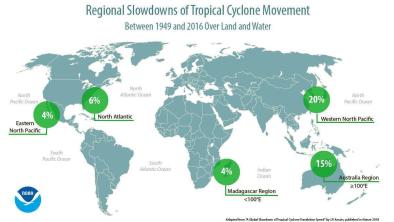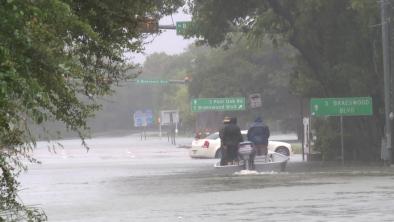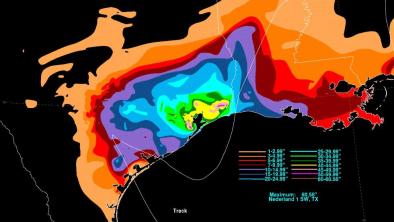Science Source
Assessing the present and future probability of Hurricane Harvey’s rainfall
You’re rolling the dice every year. And we believe the odds of a flood like Harvey are changing.
When you take a very, very rare, extreme rainfall event like Hurricane Harvey, and you shift the distribution of rain toward heavier amounts because of climate change, you get really big changes in the probability of those rare events. People have to understand that damage is usually caused by extreme events.
– Kerry Emanuel, atmospheric science professor and co-director of the Lorenz Center at MIT
- States that statistically based risk assessment suffers from short records of often poor quality, and in the case of meteorological hazards, from the fact that the underlying climate is changing
- Shows how a recently developed physics-based risk assessment method can be applied to assessing the probabilities of extreme hurricane rainfall, allowing for quantitative assessment of hurricane flooding risks in all locations affected by such storms, regardless of the presence or quality of historical hurricane records
- Estimates, for current and future climates, the annual probability of areally averaged hurricane rain of Hurricane Harvey’s magnitude by downscaling large numbers of tropical cyclones from three climate reanalyses and six climate models
- Estimates that the annual probability of 500 mm of area-integrated rainfall for the state of Texas was about 1% in the period 1981–2000 and will increase to 18% over the period 2081–2100 under Intergovernmental Panel on Climate Change (IPCC) AR5 representative concentration pathway 8.5
- Finds that if the frequency of such event is increasingly linearly between these two periods, then in 2017 the annual probability would be 6%, a sixfold increase since the late 20th century
Related Content
Headline

Jun 6, 2018 | LA Times
Hurricanes and typhoons are slowing down, which means more time to do damage
Headline

Jun 6, 2018 | KPRC
Report gives new insight into just how bad Hurricane Harvey was
Science Source
| Nature
A global slowdown of tropical-cyclone translation speed
James P. Kossin
Headline

May 24, 2018 | The Weather Channel
New NOAA Maps Show the Torrents Harvey Unleashed on Texas


